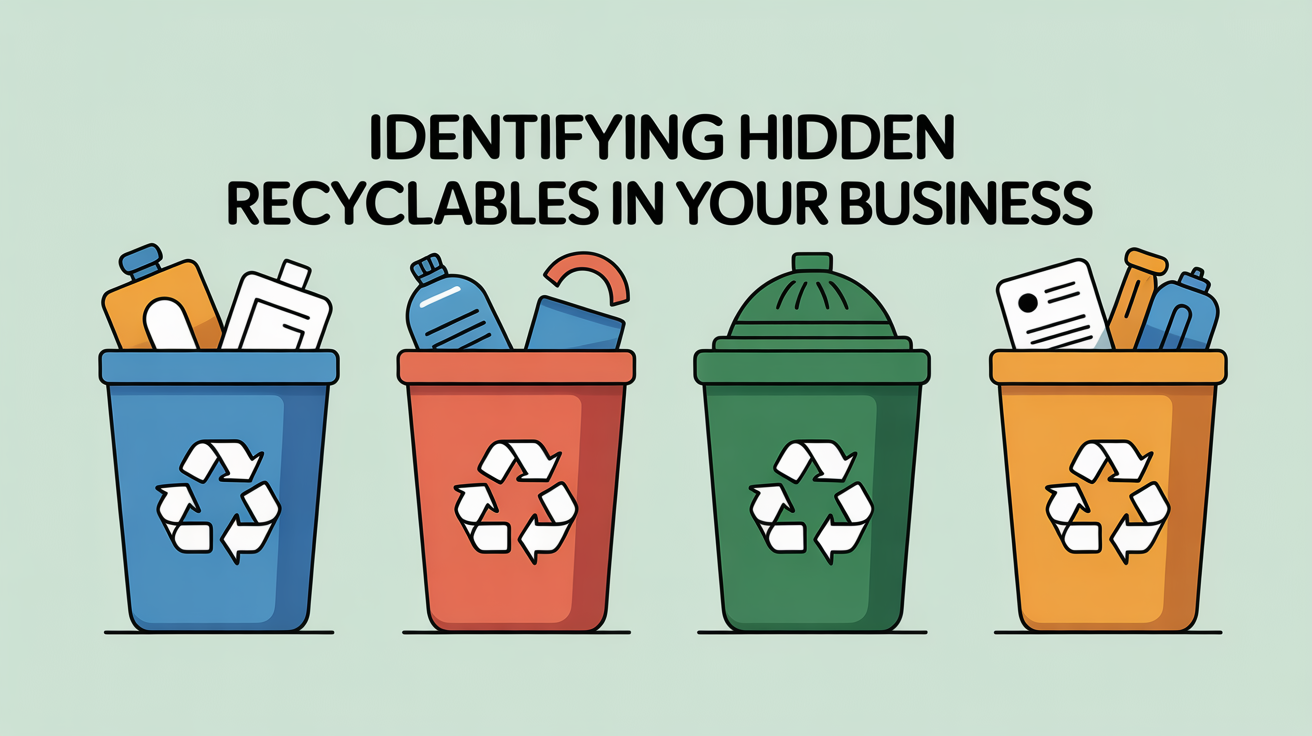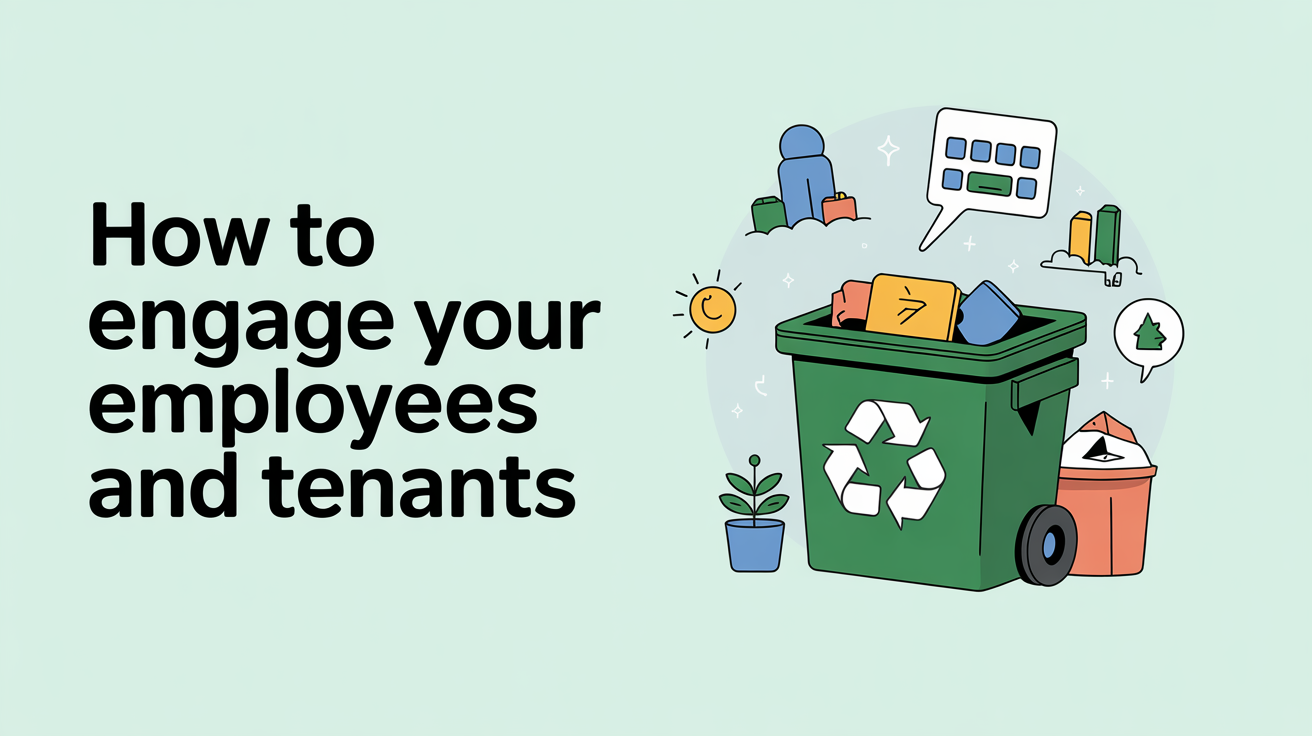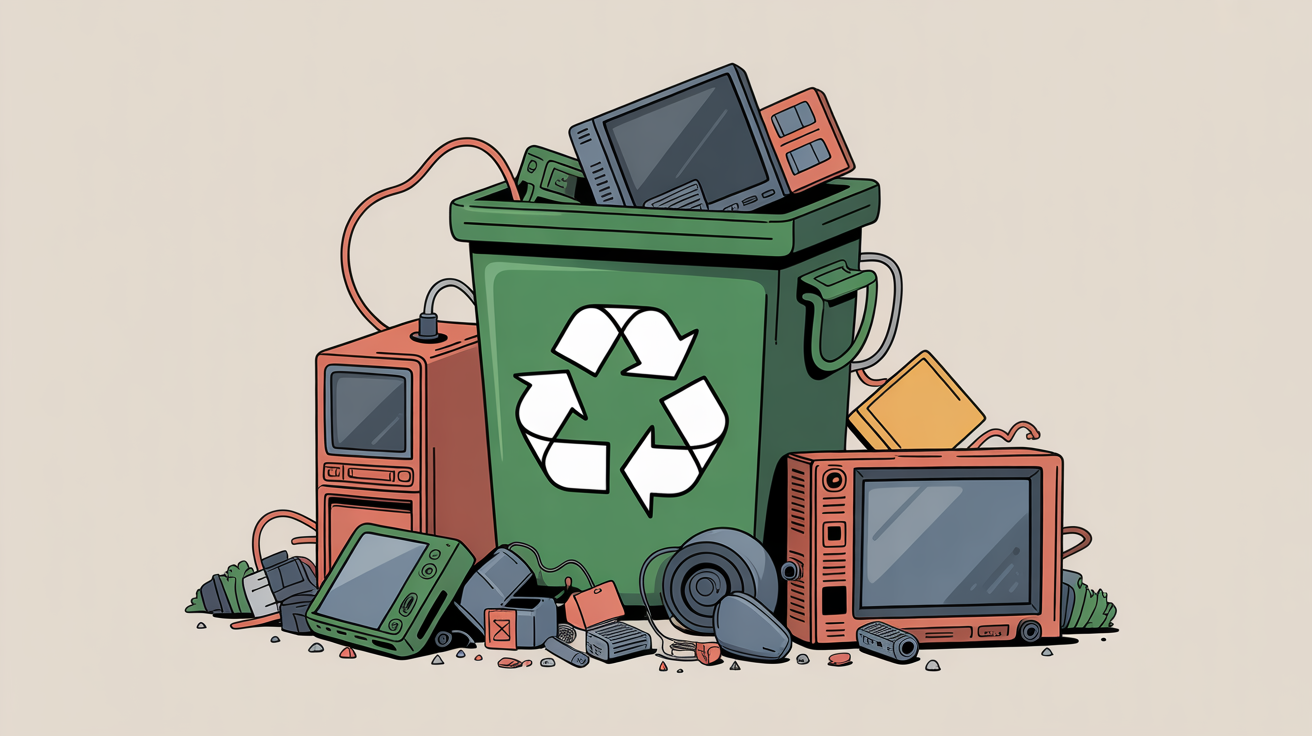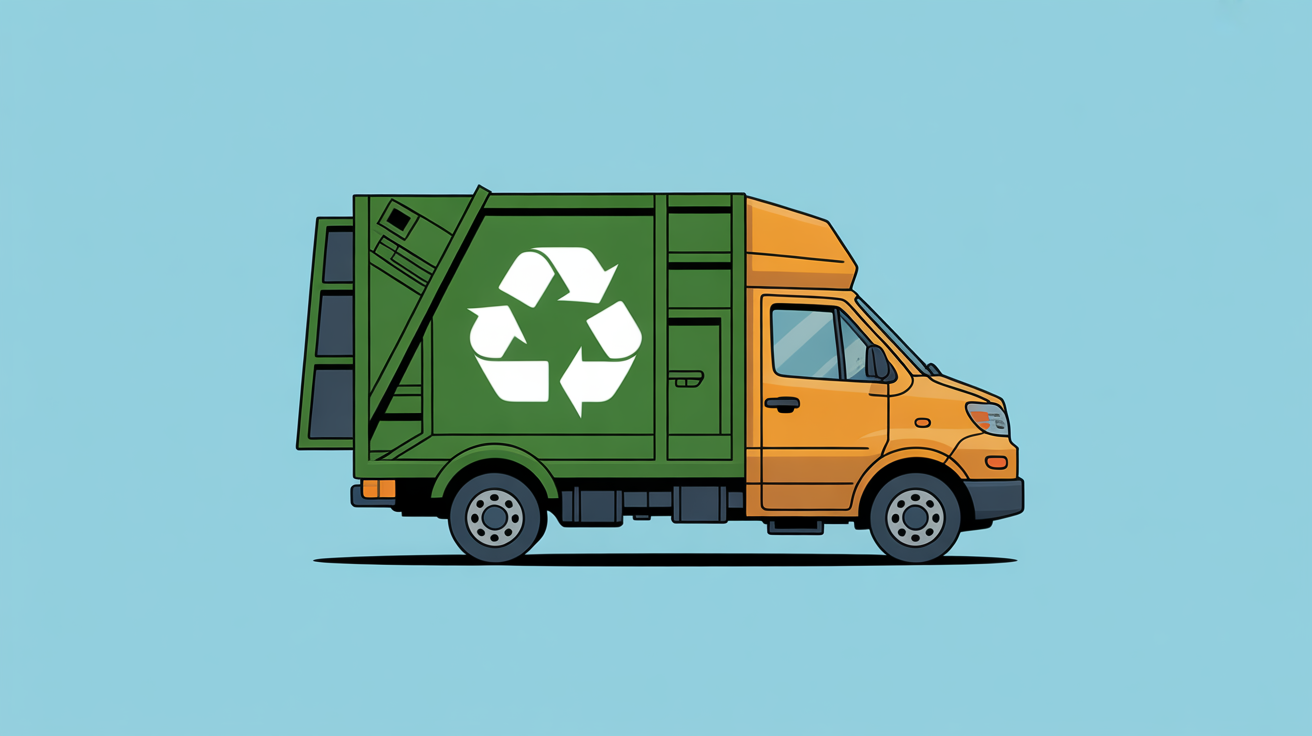Featured Snippet
A waste audit is a systematic assessment of your business's waste stream to identify recyclable materials currently going to landfills. By analyzing what's in your dumpsters, businesses typically discover 20-30% of their "trash" is actually recyclable material like cardboard, metals, and electronics, leading to significant cost savings and improved environmental compliance.
Video Summary:
Introduction: Waste Audit for Businesses
Every day, California businesses throw away thousands of dollars in recyclable materials without realizing it. From copper wiring in renovation debris to cardboard from daily operations, these hidden recyclables end up in dumpsters headed for landfills. But here's the reality: conducting a simple waste audit can transform your disposal costs into recycling revenue while boosting your environmental compliance.
What Is a Waste Audit for Businesses and Why Your Business Needs One
A waste audit examines everything your business throws away to identify what can be recycled, reused, or diverted from landfills. Think of it as a financial audit for your trash—except instead of finding tax deductions, you're finding recyclable materials that shouldn't be there in the first place.
Studies consistently show that commercial facilities send 20-30% recyclable materials to landfills [1]. For a typical California office building generating 10 tons of waste monthly, that's potentially 3 tons of recyclables creating unnecessary disposal costs. And with California's mandatory commercial recycling requirements under AB 341 and AB 1826, understanding your waste composition isn't just smart business—it's legally required for many businesses [2].
The financial impact goes beyond compliance. When you identify and separate recyclables like metals, cardboard bales, and electronics, you're reducing the volume going to your dumpster. Less trash means fewer pickups, smaller containers, and lower monthly bills.
Step-by-Step: How to Conduct Your First Waste Audit
Step 1: Choose Your Audit Week
Select a typical business week that represents your normal operations. Avoid holidays, special events, or unusual production periods. You want data that reflects your everyday waste generation.
Step 2: Set Up Collection Stations
Before your audit week begins, set up clearly labeled containers for different waste streams:
- General trash
- Mixed recyclables
- Cardboard and paper
- Metals (aluminum, steel, copper)
- Electronics and batteries
- Organic waste (if applicable)
Step 3: Track and Sort Daily
Each day during your audit week, have designated staff sort waste into the appropriate containers. Keep a simple log sheet tracking:
- Volume or weight of each category
- Notable items that appear frequently
- Contamination issues (recyclables with food waste, etc.)
Step 4: Analyze Your Results
At week's end, calculate the percentage of each waste type. Most businesses discover surprising patterns:
- Cardboard often accounts for 25-40% of volume
- Metals from maintenance and renovation appear regularly
- Electronics accumulate faster than expected
Step 5: Identify Quick Wins
Look for the easiest materials to divert first. Cardboard bales, scrap metal, and electronics typically offer immediate recycling opportunities with established markets and pickup services.
Common Hidden Recyclables in California Businesses
During waste audits, certain recyclables consistently surprise business owners. Here's what to watch for:
Metals in Unexpected Places
- HVAC Components: Old units contain valuable aluminum and copper
- Electrical Updates: Wire scraps from renovations contain recoverable copper
- Maintenance Materials: Steel shelving, aluminum frames, brass fixtures
Electronics Beyond Computers
- Medical Equipment: Hospitals replacing beds and monitoring devices
- Kitchen Appliances: Restaurants updating equipment
- Office Electronics: Printers, phones, and cables accumulate quickly
Bulk Cardboard Opportunities
Many businesses don't realize their cardboard volume qualifies for baling programs. Once baled, cardboard becomes a commodity rather than a disposal cost.
Turning Audit Results Into Action
After identifying your recyclables, implementation becomes critical. Start with these steps:
Establish Collection Points: Place recycling containers where materials naturally accumulate. Kitchen areas need bins for aluminum cans. Loading docks need cardboard collection.
Train Your Team: Share audit results with staff. When employees understand that 30% of the dumpster's contents could be recycled, they become more conscious about sorting.
Partner with Specialists: General waste haulers often lack expertise in specific recyclables. Metal recyclers, for instance, can handle everything from copper wiring to entire HVAC units, materials that require specialized processing.
Schedule Regular Pickups: Consistency prevents recyclable buildup. Whether it's weekly cardboard bale collection or monthly metal pickup, regular service keeps your program running smoothly.
Measuring Success and Continuous Improvement
Your first audit establishes a baseline. Schedule quarterly mini-audits to track progress. Key metrics include:
- Recycling rate (percentage diverted from landfill)
- Cost per ton for disposal vs. recycling
- Contamination rates in recycling streams
- Employee participation levels
Document these metrics for compliance reporting and to demonstrate environmental responsibility to stakeholders.
Real Cost Savings for California Businesses
Consider a Sacramento construction company's typical waste profile. Before conducting an audit, they paid $800 monthly for two dumpster pickups weekly. Their audit revealed:
- 35% construction metal scraps
- 25% cardboard packaging
- 15% wood waste (recyclable)
- 25% actual trash
By separating metals and cardboard for recycling pickup, they reduced dumpster service to once weekly, saving $400 monthly while generating recycling revenue. The audit investment paid for itself within the first month.
Next Steps: From Audit to Ongoing Program
A successful waste audit opens doors to sustained recycling programs. California businesses partnering with mobile recycling services can implement flexible pickup schedules that match their actual generation rates. This flexibility proves especially valuable for businesses with fluctuating waste volumes—construction sites during different project phases, hospitals during equipment updates, or offices during relocations.
Ready to uncover the recyclables hiding in your waste stream? Start with a simple one-week audit using the steps outlined above. Track what goes into your dumpsters, identify the recyclables, and calculate potential savings.
For businesses in Greater Sacramento and throughout California, professional recycling partners can provide on-site evaluations to help identify valuable materials and establish efficient collection systems. Whether you're managing tons of metal from construction projects or regular cardboard from daily operations, the right recycling program transforms waste management from a cost center into an opportunity for both savings and environmental stewardship.
Take action today: Schedule your waste audit for next week, and discover exactly how much recyclable material your business sends to landfills. Your bottom line—and California's environment—will thank you.
Works Cited
[1] EPA - "Managing and Reducing Wastes: A Guide for Commercial Buildings." URL: https://www.epa.gov/smm/managing-and-reducing-wastes-guide-commercial-buildings. Published: 2023-06-15. Accessed: 2024-12-19.
[2] CalRecycle - "Mandatory Commercial Recycling." URL: https://calrecycle.ca.gov/recycle/commercial/. Published: 2024-01-10. Accessed: 2024-12-19.



